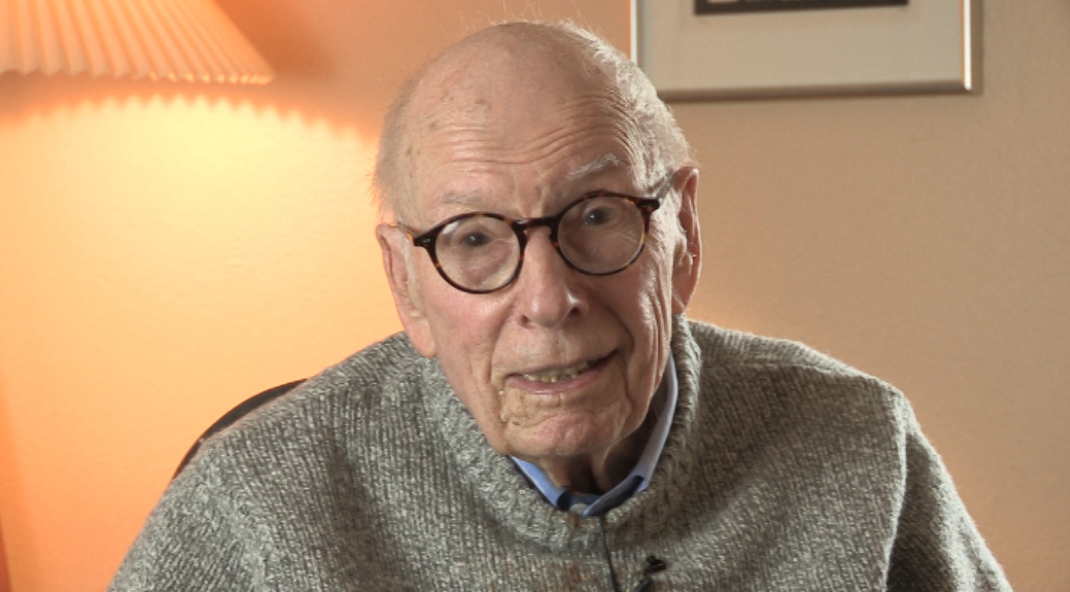NEXT STORY

What makes slime mold grow at right angles?
RELATED STORIES

NEXT STORY

What makes slime mold grow at right angles?
RELATED STORIES


|
Views | Duration | |
|---|---|---|---|
| 21. My inferiority complex | 175 | 01:28 | |
| 22. The inimitable William H Weston | 77 | 03:33 | |
| 23. A serendipitous discovery | 72 | 02:02 | |
| 24. Upstaged by slime molds | 70 | 02:30 | |
| 25. How slime molds grow | 65 | 03:08 | |
| 26. My eureka moment | 101 | 03:11 | |
| 27. Filming slime mold as it grows | 97 | 03:10 | |
| 28. What makes slime mold grow at right angles? | 57 | 03:29 | |
| 29. Ammonia is it! | 44 | 01:22 | |
| 30. Complemented on my thesis | 1 | 43 | 00:41 |


I thought that I should have some way of showing people what was happening because you try and describe it, and it's not… and so I asked Cap Weston if he had any time-lapse machinery. And he said, oh, yes, he does have one, this and this basement or something. And it was the damnedest thing you've ever seen because there were these huge brass wheels, very, very heavy. And they rotated an aperture in a box, which was just… I tell you, you've seen these boxes. You've seen pictures of old Keystone Cops, with a man cranking. Well, that was the box and only it was not man-cranking, it was this gearbox that was connected. It had eight speeds and it made such vibration that you had to put it on a separate table from the optics, so that they didn't actually touch and jiggle one another, and all sorts of fiddle things which are not important except that you're trying to repeat it. And just let it go and it was just wonderful. I couldn't believe it. And so I did have some very good professional help from a Labradorean photographer, Frank White, who helped me with the developing and all the sort of photography end of it. But in any event that film, I've often thought, was the real reason I graduated. I don't think people really cared what I wrote about it and because everybody likes the film.
[Q] What would we see? If we watched the films, what do they show?
Well, they show the remarkable fact that you have these amoebae that string together and then they produce a structure which has two cell types, stalk cells and terminal spores. So it's really quite a remarkable phenomenon.
John Tyler Bonner (born in 1920) is an emeritus professor in the Department of Ecology and Evolutionary Biology at Princeton University. He is a pioneer in the use of cellular slime molds to understand evolution and development and is one of the world's leading experts on cellular slime molds. He says that his prime interests are in evolution and development and that he uses the cellular slime molds as a tool to seek an understanding of those twin disciplines. He has written several books on developmental biology and evolution, many scientific papers, and has produced a number of works in biology. He has led the way in making Dictyostelium discoideum a model organism central to examining some of the major questions in experimental biology.
Title: Filming slime mold as it grows
Listeners: Christopher Sykes
Christopher Sykes is an independent documentary producer who has made a number of films about science and scientists for BBC TV, Channel Four, and PBS.
Tags: time-lapse, camera, film, amoeba
Duration: 3 minutes, 10 seconds
Date story recorded: February 2016
Date story went live: 14 September 2016